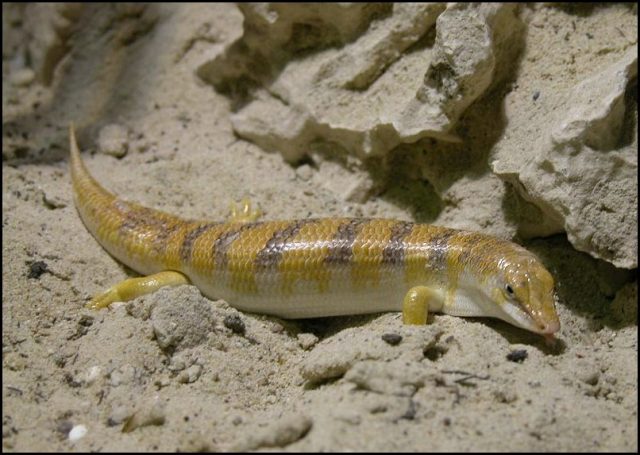Type the name of the breed you're looking for below
[wpdreams_ajaxsearchlite] Don't see the breed your're looking for? Click here and let us know!
Sand-Fish Skink
| Place of Origin and Range | It is native to north Africa and south western Asia. |
| Description | The Sand-fish has developed a peculiar way of dealing with the desert heat; it possesses the ability to dive into soft sand. It does this to prevent overheating (as it is cold-blooded) and whenever it feels threatened. This skink has a long, wedge-shaped snout with a countersunk lower jaw. Its long, tapered body is covered with smooth, shiny scales, and its legs are short and sturdy with long, flattened and fringed feet. The tail is short, tapering to a fine point. The colouration of this species is considered attractive, being yellow-caramel with brown-black cross bands. This lizard also has bead-like eyes so it can close them to keep sand out of its eyes. Similarly, its nostrils are very small to keep all of the sand out of its nose and lungs. |
| Morph Patterns Available | Yes |
| Adult Size | Can grow up to 6 in (15 cm ) |
| Accommodation | The Sandfish is a species of skink that burrows into the sand and swims through it. They are active and predatory lizards, requiring a large amount of space to run. They prefer high temperatures, up to 105–110 °F (41–43 °C) at their basking spot and 80 °F (27 °C) elsewhere in their habitat during the day. |
| Lifespan | Can live 6 - 10 years |
| Feeding / Diet | Some of these skinks eat fruits or vegetables, but most are entirely insectivorous. Like many reptiles, in captivity they must be provided a diet supplemented with extra calcium and a light source with a UVB radiation to reduce the risk of bone disorders. |



